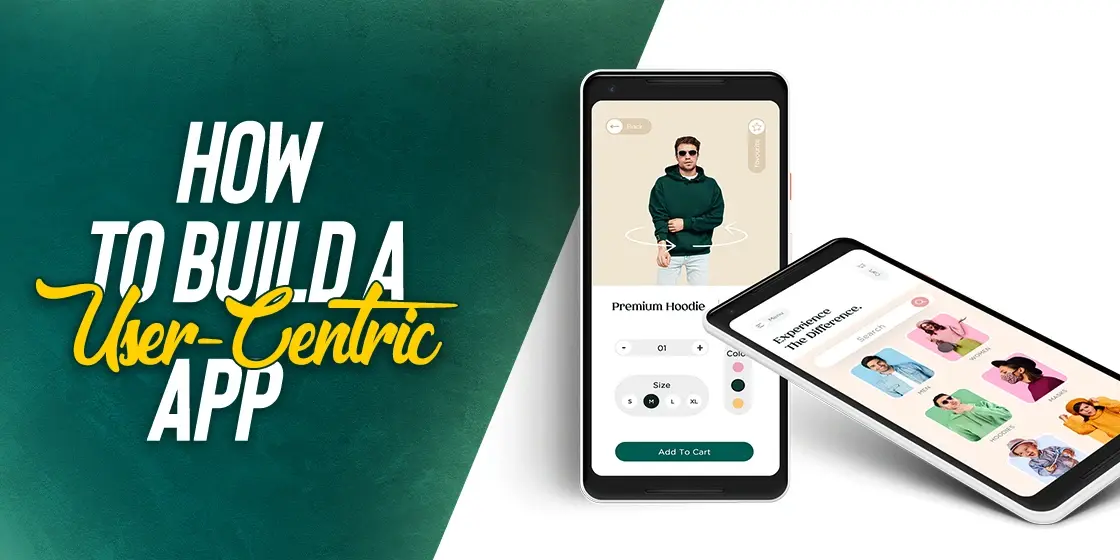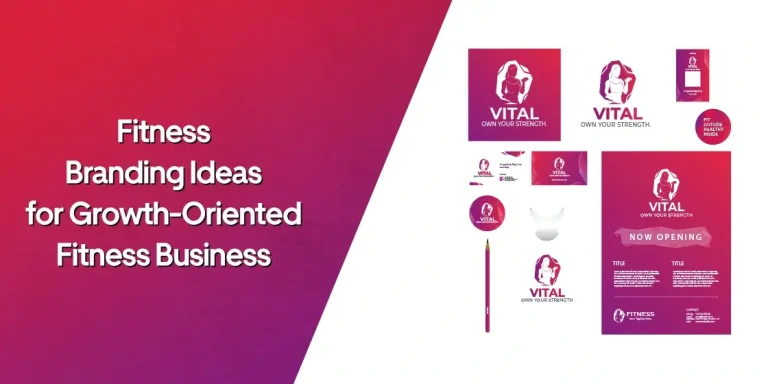
Table of Content
Imagine this: You launch a new app on your smartphone, eager to discover all of its features and capabilities. However, your initial delight gives way to irritation as you attempt to navigate through the perplexing options and run into awkward exchanges. The disappointment of using subpar software that falls short of our expectations is something that we’ve all felt at some time. Building a user-centric app is becoming a need in the current digital environment.
In this post, we go into the realm of user-centric design, revealing the fundamental ideas and UX techniques that serve as the building blocks for developing genuinely outstanding products. We’ll examine the essential elements of developing an app that places the user at its center, from comprehending user demands to creating user-friendly interfaces and adopting evolving trends.
What is User-Centric Design?

Understanding the fundamentals of user-centric design is the first step in creating a user-centric app. Empathy is at the center of user-centric design, which prioritizes the requirements and preferences of the final user throughout the whole design process. It entails meticulously designing experiences that satisfy the user’s preferences, expectations, and actions.
Let’s think about Spotify, one of the most well-known success stories, for a moment to fully appreciate the value of user-centric design. The introduction of the dominant music streaming service transformed how we listen to music. A routine listening experience was converted into an exceptional adventure by its smooth and tailored user interface. This achievement was not by chance; rather, it was the outcome of careful attention to user research, persona building, and ongoing revisions to satisfy user expectations.
If you plan to develop an application by hiring developers and designers, then you probably know how much it costs to make an app and that many factors affect this. But we want to warn you against trying to save money on any of the development stages, because if something goes wrong, then your application risks failing.
How Important Is User-Centered Design?
Since you are building the product for the user, user-centered design is crucial. Additionally, you want consumers to interact with it and enjoy the process, not merely recognize what you’ve done in their minds. It’s similar to receiving a present for a loved one. Its quality and significance to the receiver are directly related to the amount of care and thought that went into it.
You need a design that motivates customers to do the desired action if you want them to interact with your product as frequently as possible. Superior usability, a crucial component of an outstanding user experience, and a significant competitive advantage result from designing with the end user in mind. Consumers want to be prioritized before choosing any brand since they are aware of their worth to businesses. User-centered design is how you show your target audience how devoted you are to them.
This is where using AI testing, along with tools like design system libraries, automated UI audits, and heatmaps, becomes invaluable. These tools work together to spot inconsistencies, highlight confusing elements, and ensure that every screen follows the same visual and functional logic. Just as consistency builds confidence, these tools help reinforce that sense of reliability by reducing unnoticed errors and improving overall usability. With the right toolkit in place, users are free to focus on their goals without getting distracted by design flaws or unexpected behavior.
User-Centric App Design Principles
Persona Development and User Research
Surveys, interviews, and observations are conducted as part of user research to obtain information that guides the design of the app. To create an app that meets the needs of the user, developers must first discover common pain points and motives.
The next step after gathering information is to develop user personas. These fictitious portrayals of intended consumers provide developers with a better understanding of their market and assist them make design decisions that are in line with user expectations, motivations, and frustrations.
Consistent and Intuitive User Interface (UI) Design
Imagine entering a space where the light switches are dispersed randomly and without any rhyme or reason. It would be a challenging and perplexing situation. The same is true for apps that have a confusing user interface. A seamless user experience, in which interactions feel natural and effortless, depends on intuitive UI design.
Another essential UI design guideline is consistency. Users may easily explore the app by setting up patterns and conventions since familiar aspects alleviate cognitive strain and improve usability. Users may interact with the app with confidence and without the worry of becoming lost in a maze of foreign screens thanks to a consistent user experience.
Inclusive and Accessible Design
The core of user-centric design is inclusivity. All users of an app, regardless of ability or disability, should be able to use it. By following inclusive design principles, creators make sure that everyone can make use of their app’s advantages. Small considerations may have a big effect on user accessibility, from including the right color contrast for people with visual impairments to offering alternate text for screen readers.
We can build a more inclusive digital environment where no user is left behind by designing with empathy.
Information Structure and Navigation
Consider an app to be a neatly arranged library. A user-centered software organizes its material with care to make it simple to find and rationally organized. A user-friendly information architecture makes it easy for users to access the information they need, reducing irritation and enhancing the overall user experience.
Any user-focused app’s navigation must be simple and effective. Users may navigate around the various aspects of the app with ease by offering logical paths and simple choices, which reduces confusion and increases engagement.
Micro-interactions: Hidden UX Trump Card
Microinteractions are an often neglected secret element in the drive to design user-centric software that can please users and enrich their experience. These small, yet significant, interactions between the user and the app can make a lasting impression.
Microinteractions are minute things that have a tremendous impact. They can be as simple as a button animation, a pleasant sound effect, or an ingenious loading screen message. These seemingly trivial details give the app personality and provide moments of delight that engage users on a deeper level.
Consider Slack, a popular chat app. When you send a message, the app responds with a modest animation and sound effects. These micro-interactions provide an instant response, confirming that your message was sent while also adding an element of fun to the overall experience. These pleasurable moments not only increase user satisfaction but also establish an emotional bond between the user and the app.
To maximize the power of micro-interactions, consider the context and intent of each interaction. Is it giving you feedback? Progress communication? Or simply adding a personal touch? Developers may create a unified and pleasurable user experience by matching micro-interactions with the app’s broader aims and user expectations.
Microinteractions should be designed with caution as well. Excessive use might lead to a crowded and irritating interface. Keep in mind that little is frequently more. Every micro-interaction should have a purpose and contribute to the app’s overall flow and usability.
Microinteractions should also be consistent with the app’s brand and visual identity. They should reflect the personality of the app, whether it’s playful, professional, or minimalist. The consistency of micro-interaction style, timing, and tone produces a unified and memorable experience that users can immediately recognize and associate with the app.
User-Centric App UX Strategies
User Journey Mapping
We must put ourselves in the user’s shoes for a mile to fully comprehend the user experience. Developers may see a user’s interactions with an app, from their initial discovery through the last action they perform, using user journey mapping. Developers may iteratively enhance the app’s design and make each interaction more fluid and rewarding by identifying user journey pain spots and areas for improvement.
Prototyping and Wireframing
Prototyping and wireframing serve as the creation of an app’s building blocks. Before spending a lot of money, developers may envision the app’s functionality, layout, and user flow using these early design strategies. Designers may get input from users and stakeholders by making interactive prototypes and wireframes, ensuring that the app meets their expectations.
Iterative Design and Usability Testing
Iterating and refining designs, which comprises testing and upgrading designs in response to user input and shifting expectations, is a crucial UX design strategy. Businesses may utilize user testing and feedback gathering to identify design problems and make the necessary changes to enhance the user experience. This entails changing the look, typeface, color scheme, or functionality of an item or service.
The iterative and refined process is ongoing since consumer needs and preferences may change over time. By frequently testing and updating designs, businesses can stay abreast of consumer wants and ensure that their products or services are still relevant and valuable. Businesses may create designs that are highly successful and helpful to their consumers by iterating and improving continuously.
Performance Enhancement
The performance of an app is crucial in this age of immediate gratification. Users might be rapidly turned off by slow-loading interfaces and sluggish interactions. To provide quick and flawless experiences, performance optimization entails tweaking the app’s code, optimizing visuals, and utilizing caching techniques. Users may remain interested and pleased by developers by speeding up loading times and improving overall performance.
Advantages of User-Centered Design
- Enhanced user satisfaction. Higher levels of satisfaction result from designing with people in mind because they feel appreciated, heard, and understood. This satisfying encounter promotes brand loyalty and promotes recurrent use.
- Boosts conversion rates. The journey is more delightful the less jarring the route is. An effortless user experience that seamlessly directs the user toward desired behaviors is provided by easy usability.
- Technology is easily accessible. By concentrating on various user types, accessible interfaces receive greater attention, resulting in more inclusive products.
- Optimizes the design process. By having well-stated design goals, you can minimize design errors while utilizing your resources to accomplish a precise target. Instead of constantly going back to the drawing board, you should invest time and effort in creating something that your users will appreciate.
- Competition advantage. Businesses stand out from rivals by providing better digital experiences by putting a priority on user-centric design. Businesses may get a competitive advantage by using this distinction to draw in and keep consumers.
Future Considerations and Changing Trends
Effect of Emerging Technologies on User Experience
New opportunities for developing more immersive and user-centric experiences open up as technology develops. The digital world is changing as a result of advances in artificial intelligence (AI), augmented reality (AR), virtual reality (VR), and voice interfaces. These innovations allow for unmatched personalization, frictionless communication, and creative user engagement strategies.
Individualization and Adaptation
The secret to a genuinely outstanding user experience is personalization. Developers may foster a sense of ownership and enjoyment by customizing the app’s suggestions, settings, and content for each user. To ensure that user data is handled carefully and openly, it’s vital to find a balance between customization and user privacy.
User-Centered Design and Ethical Considerations
Great power entails enormous responsibility. Ethical issues must always come first in user-centric design. Building user trust requires observing user privacy, receiving informed consent, and being open and honest about data usage. Developers may guarantee that user-centric design not only aims to create pleasurable experiences but also to safeguard users’ rights and well-being by respecting ethical norms.
FAQs
| How can I gather user feedback during the app development process? You may find areas for improvement and make sure the app fulfills users’ requirements and expectations by conducting usability tests on real users, obtaining feedback through surveys or interviews, and incorporating user insights into the design process. |
| What part does user research play in developing a user-centric app? By performing user research, you receive important information that guides design choices and enables you to develop an app that aligns with users’ objectives and motivations. |
| How can I ensure my app is accessible to users with disabilities? Think about including features like appropriate color contrast, screen reader compatibility, and support for assistive devices to make sure your app is accessible to people with disabilities. Potential accessibility problems can be found and fixed by adhering to accessibility rules and including individuals with impairments in testing. |
| How can I strike a balance between personalization and user privacy? Obtain user permission before collecting their data, and make sure you explain how you plan to utilize it. Put privacy controls in place and allow consumers to alter their privacy preferences. The key to finding the ideal balance between customization and user privacy is transparency and user control. |
| Why are ethical issues crucial in user-centric design? Ethical concerns make sure that user-centric design focuses on safeguarding users’ rights and well-being as well as producing enjoyable experiences. A pleasant user experience is facilitated by maintaining user privacy, receiving informed permission, and being open and honest about data usage. |
Conclusion
In summary, user-centered design is an iterative, step-by-step UX design process that, although time-consuming and demanding, keeps demonstrating its usefulness and necessity in producing the greatest possible customer experiences. Utilizing UCD techniques gives your marketing operations a fresh viewpoint and a new way to look at conversions and consumer loyalty. The user is the starting and ending point for increasing customer connections and the reputation of your organization across social media platforms, website design, and content. To design a user-centric app, keep in mind that establishing an engaging user experience is equally as important as focusing on functionality.

Logopoppin
Logopoppin is a graphic design agency that specializes in logo designing, web development, video production and advanced branding services. We love to innovate businesses with new age technologies, allowing them to improve their visual reputation.



